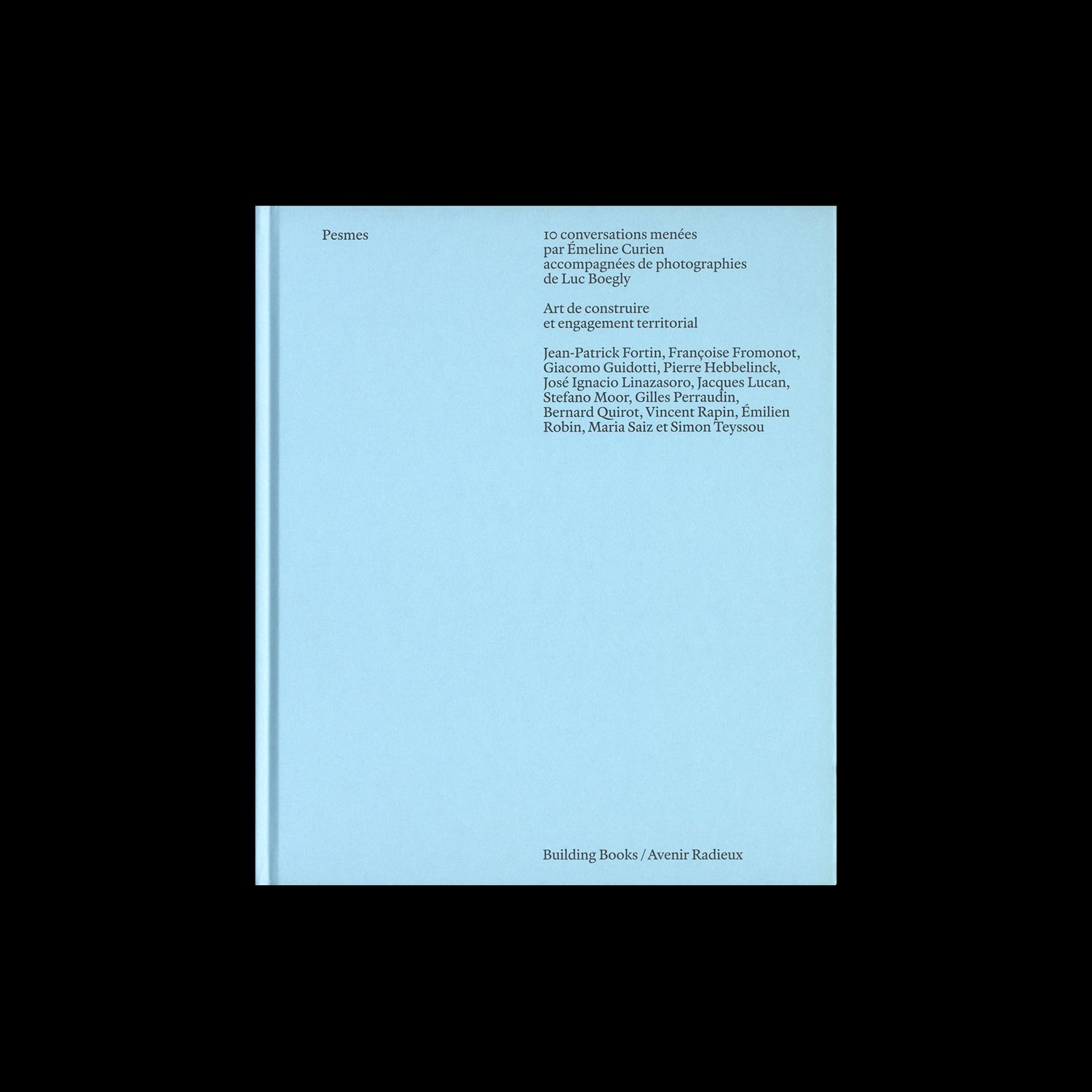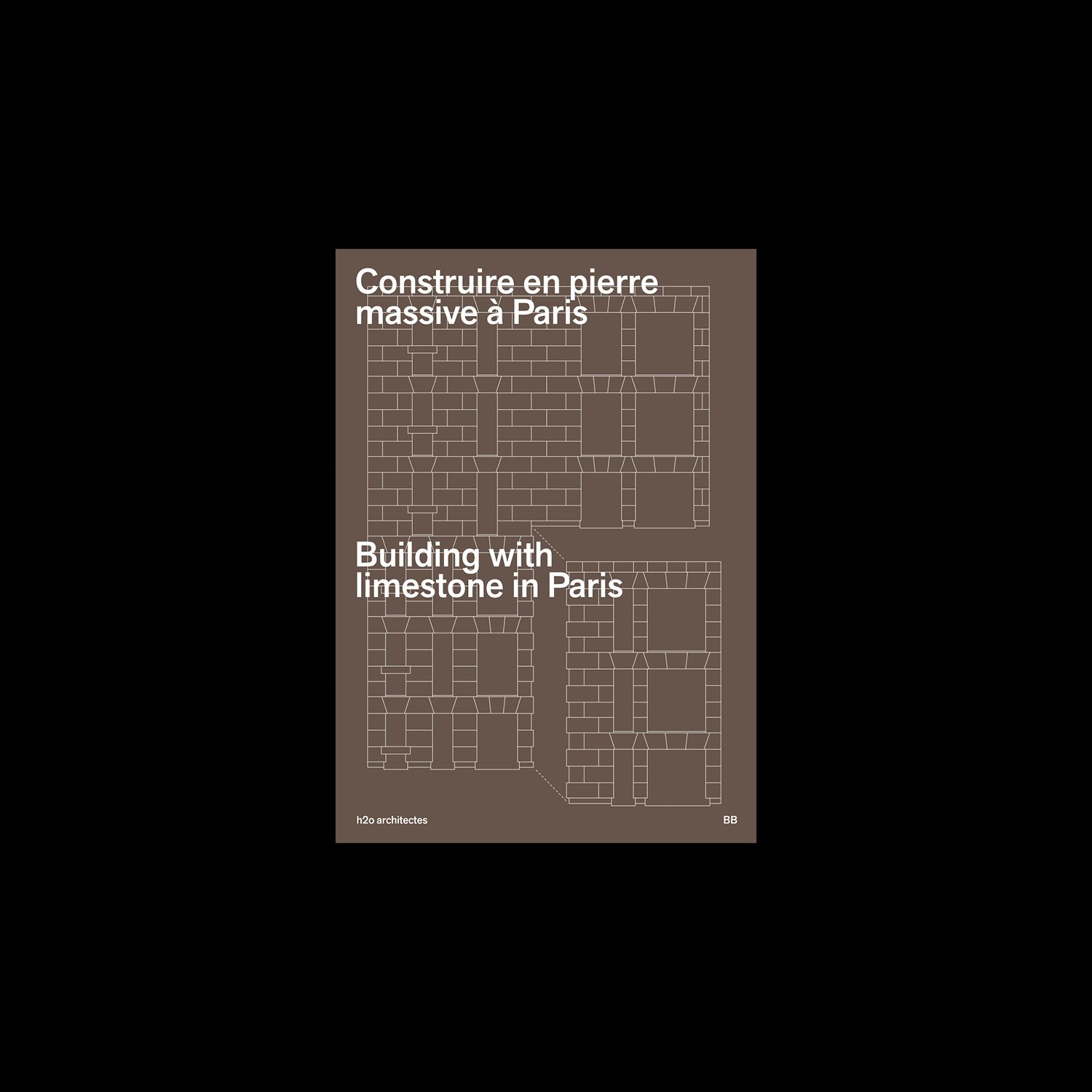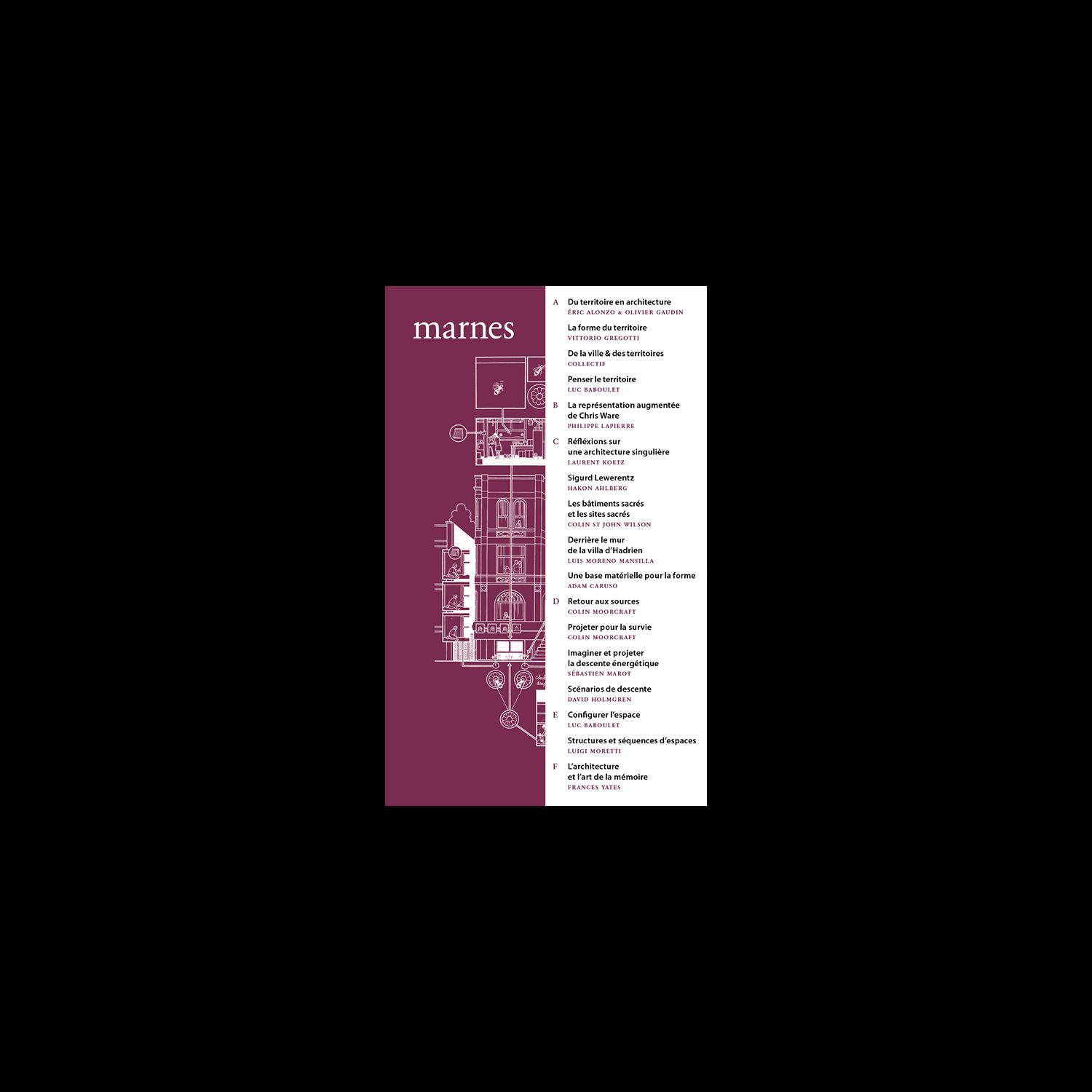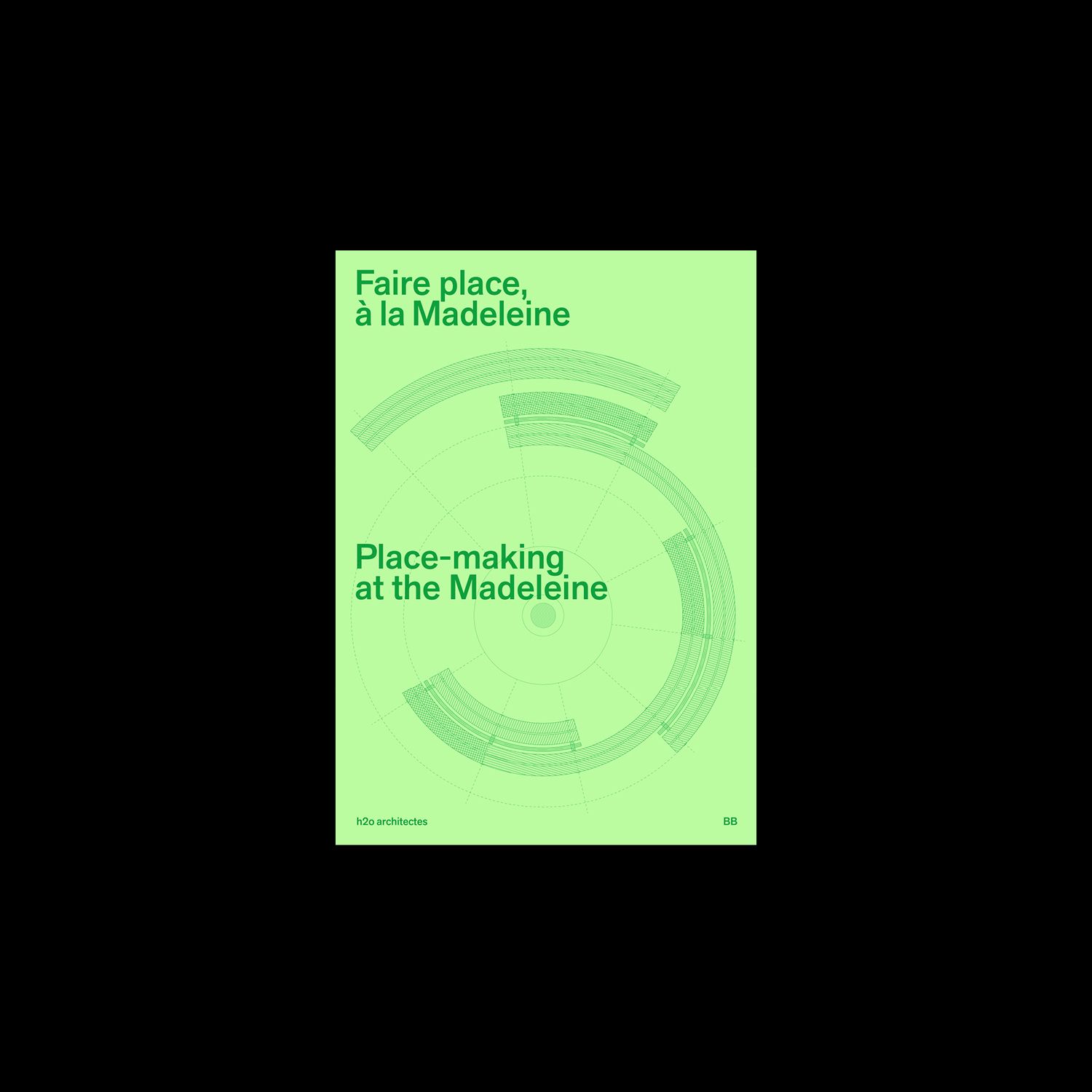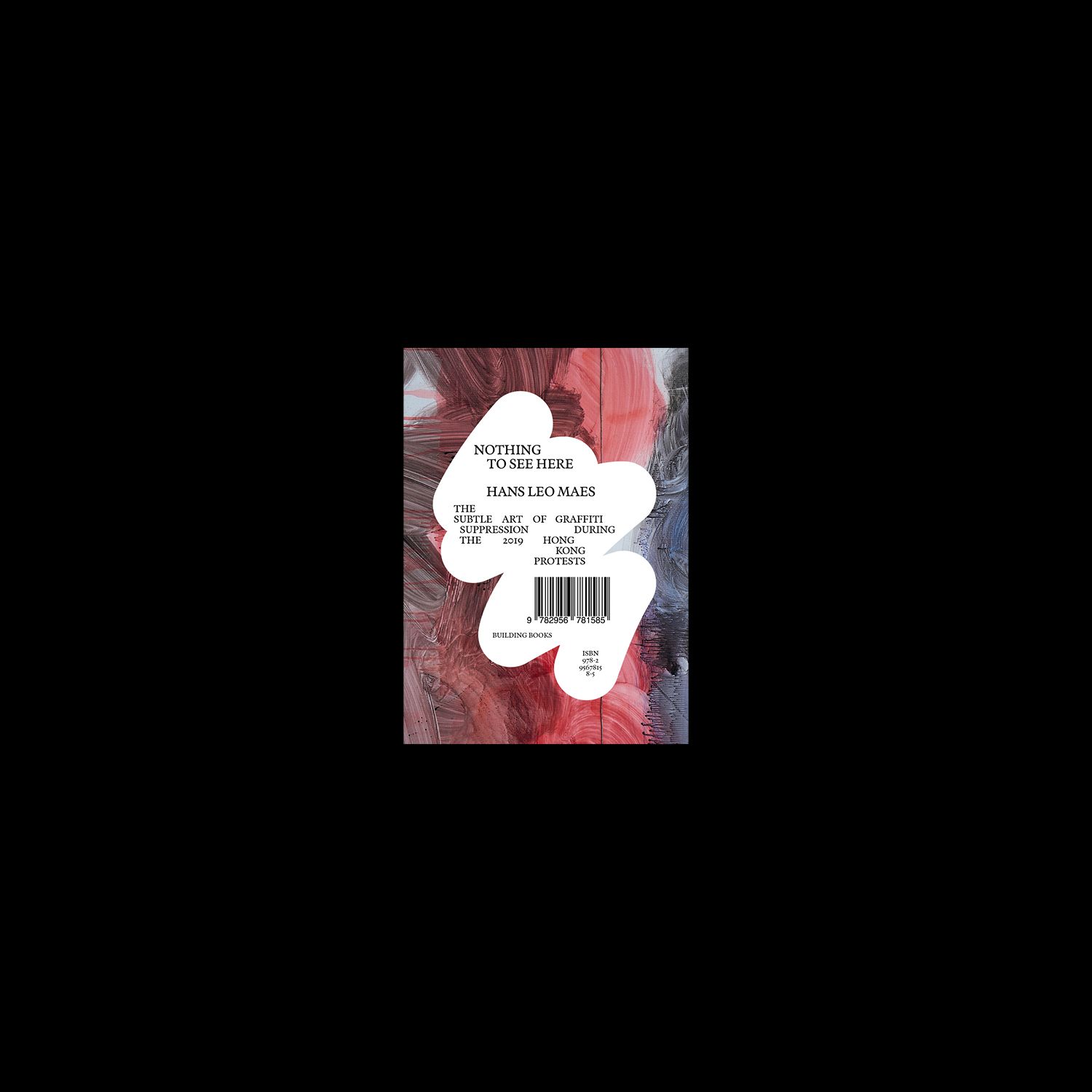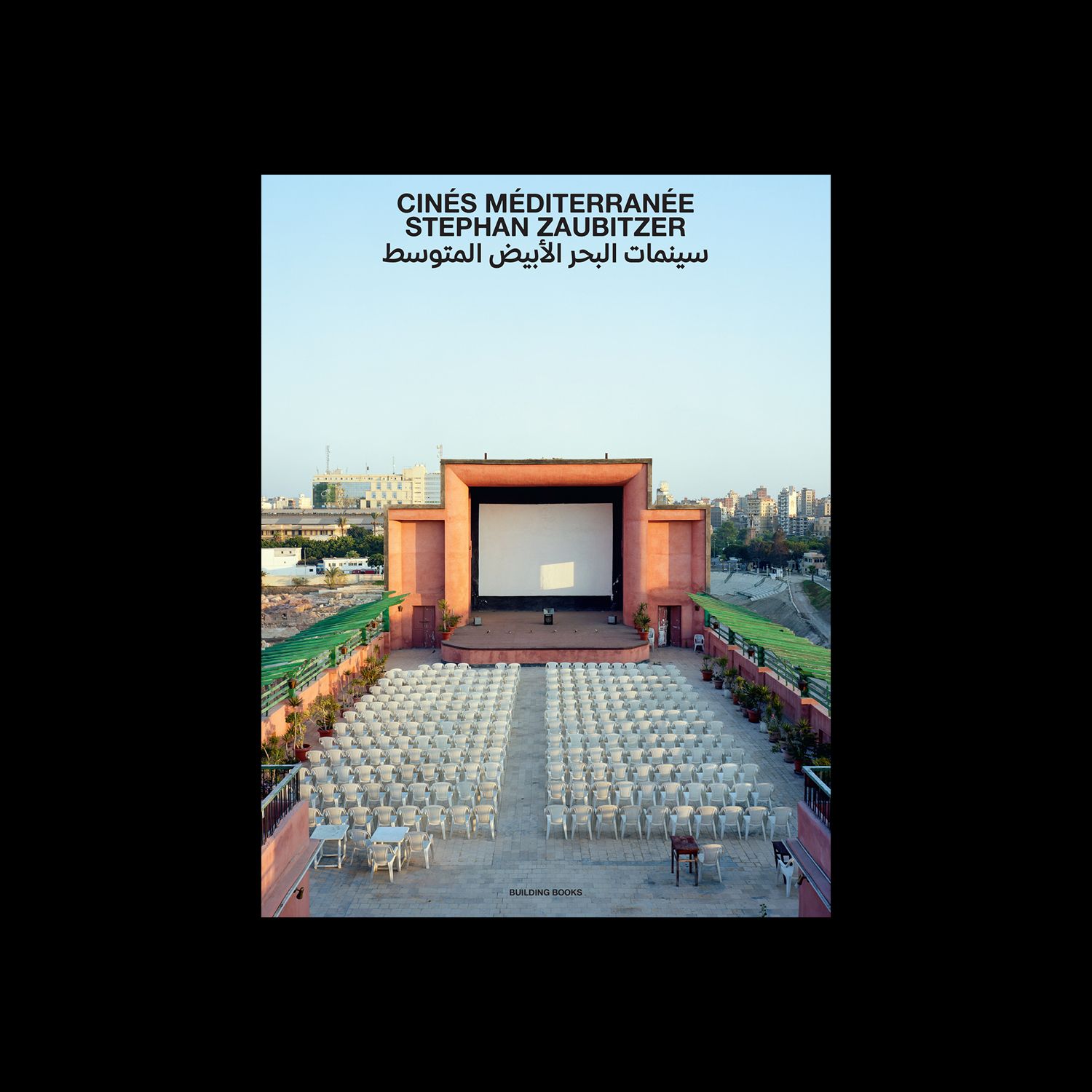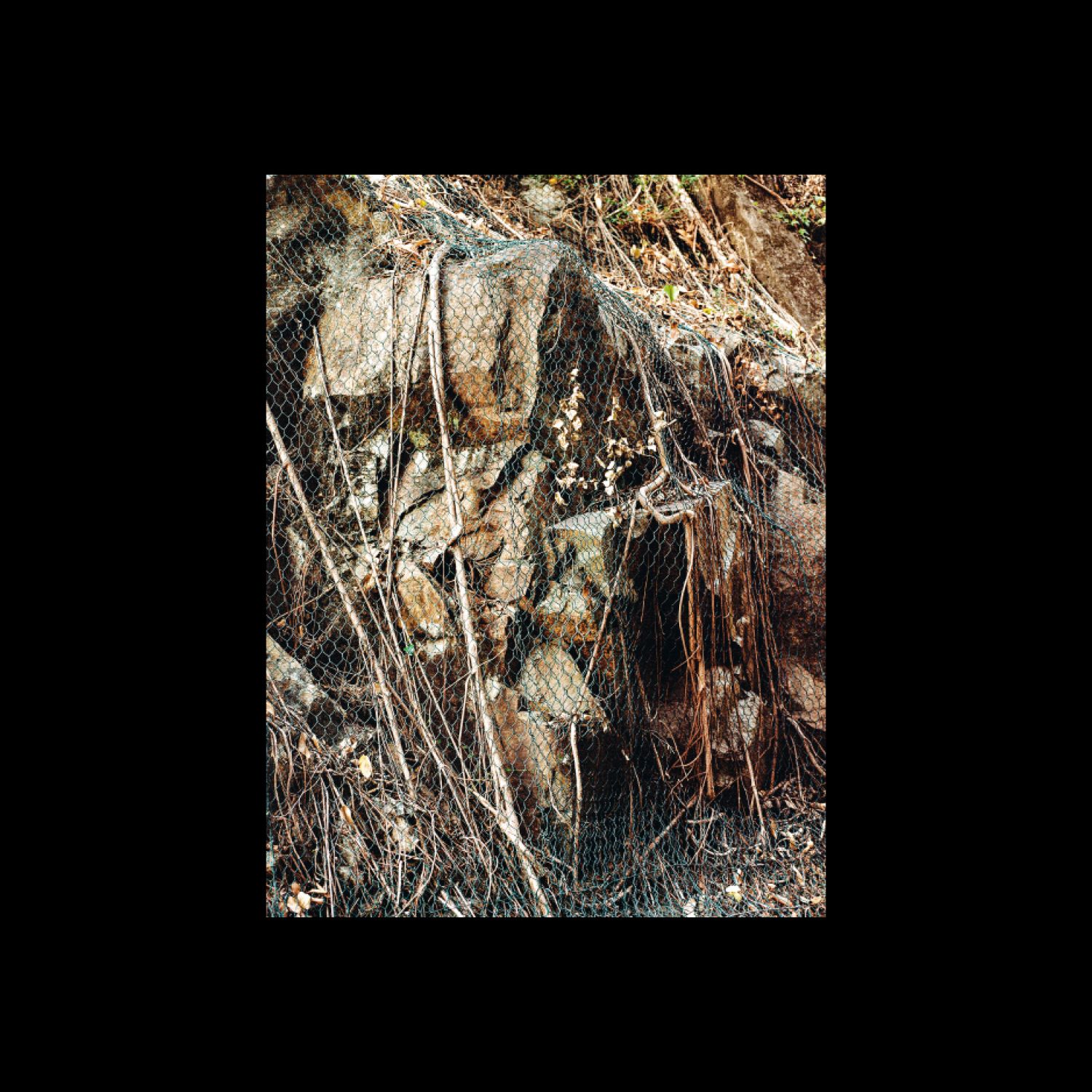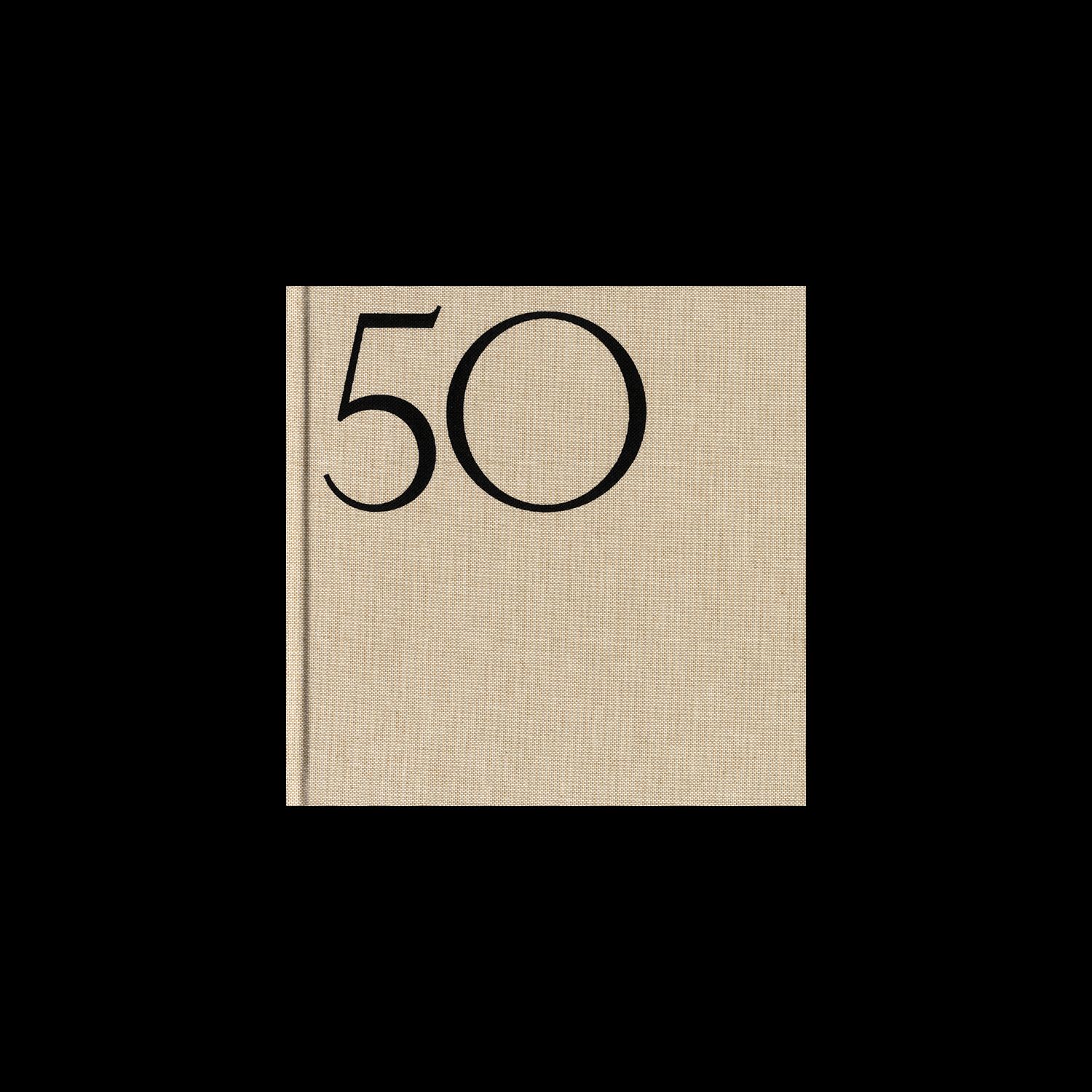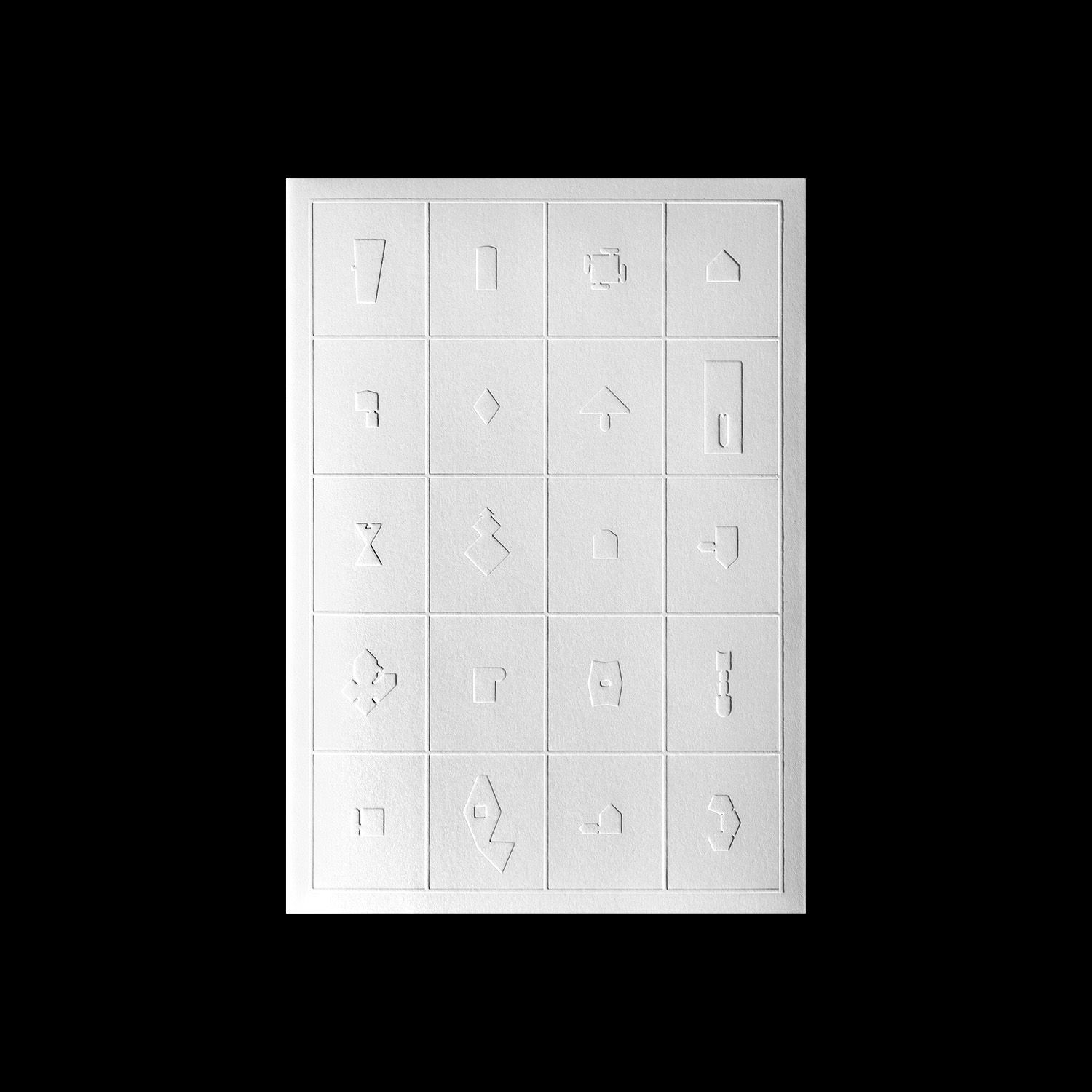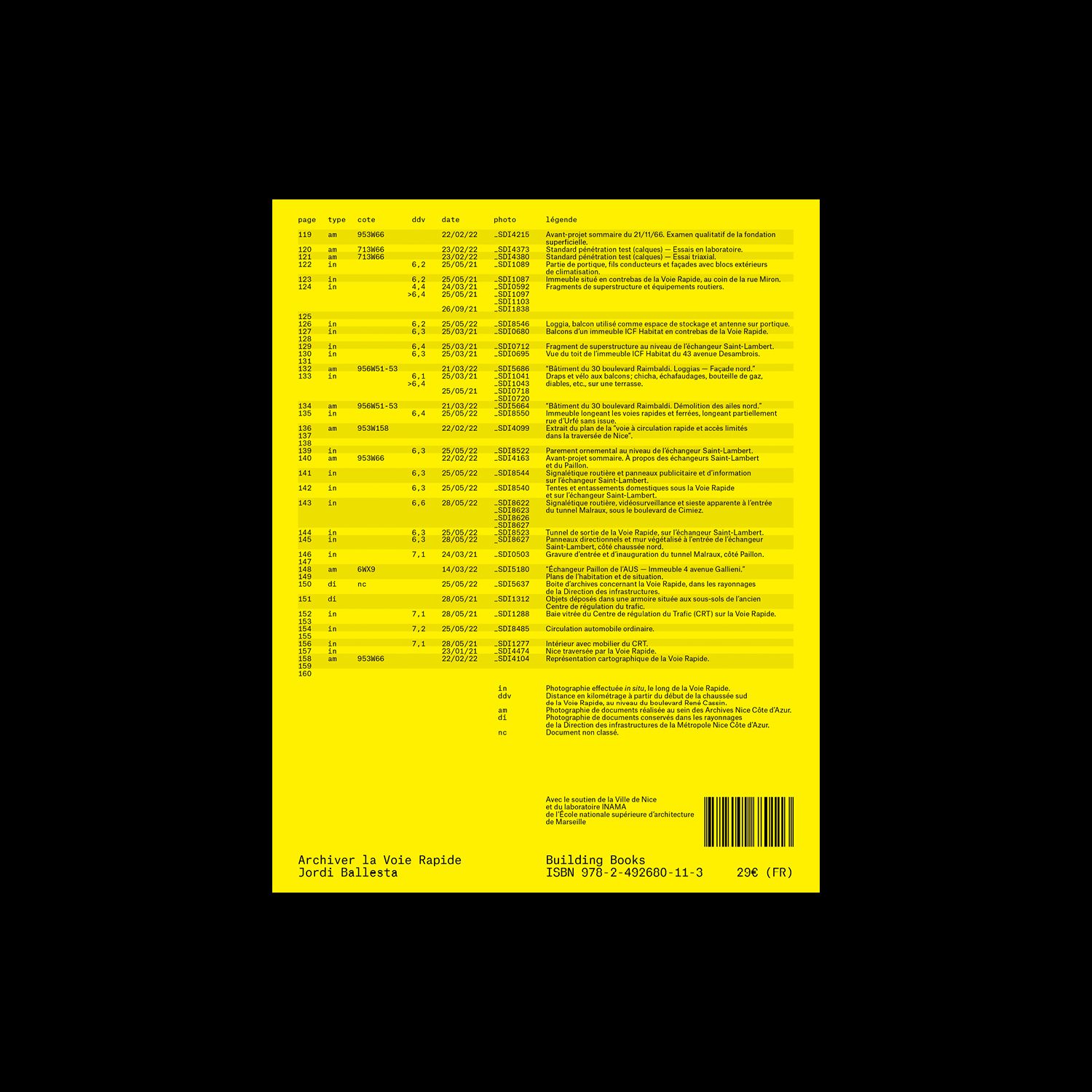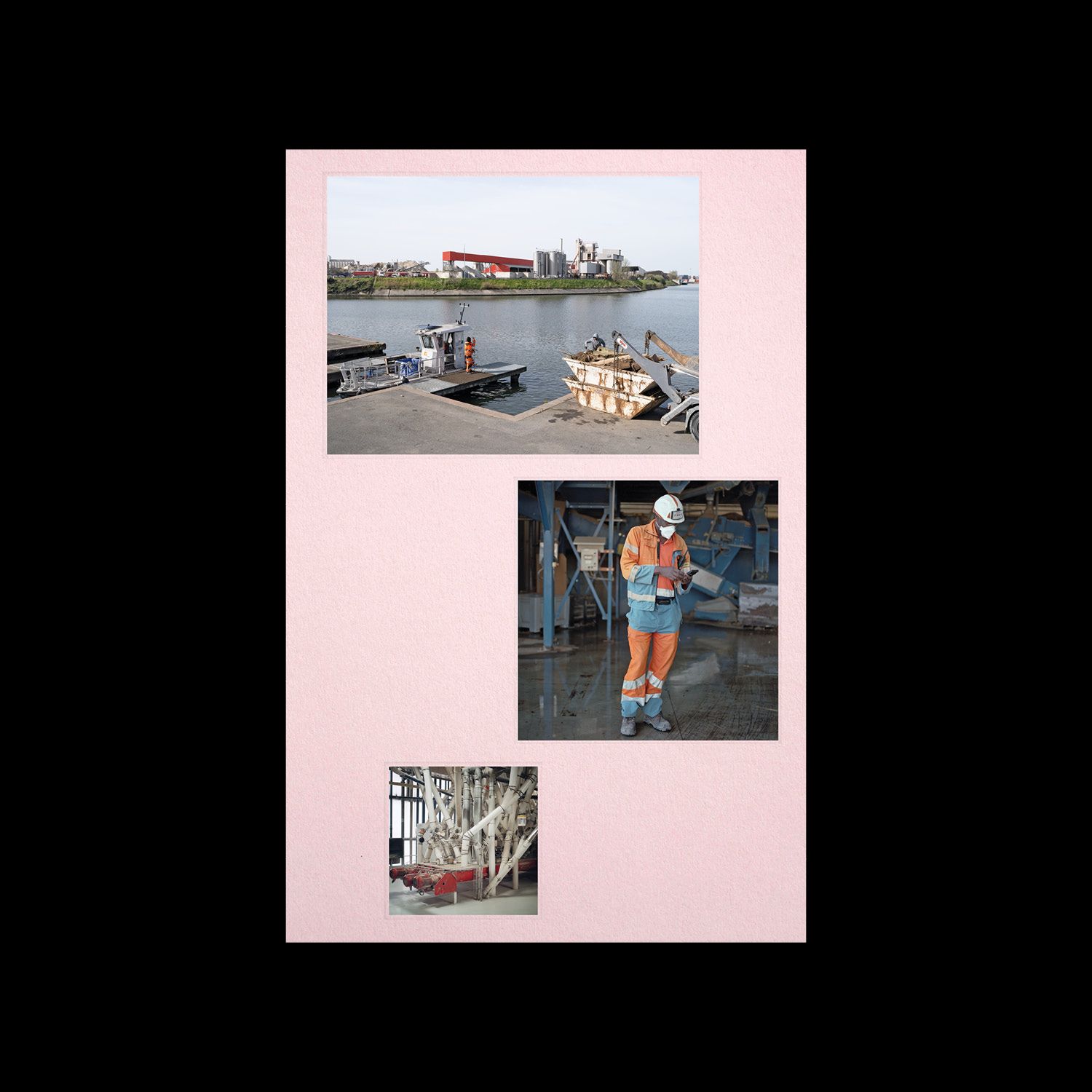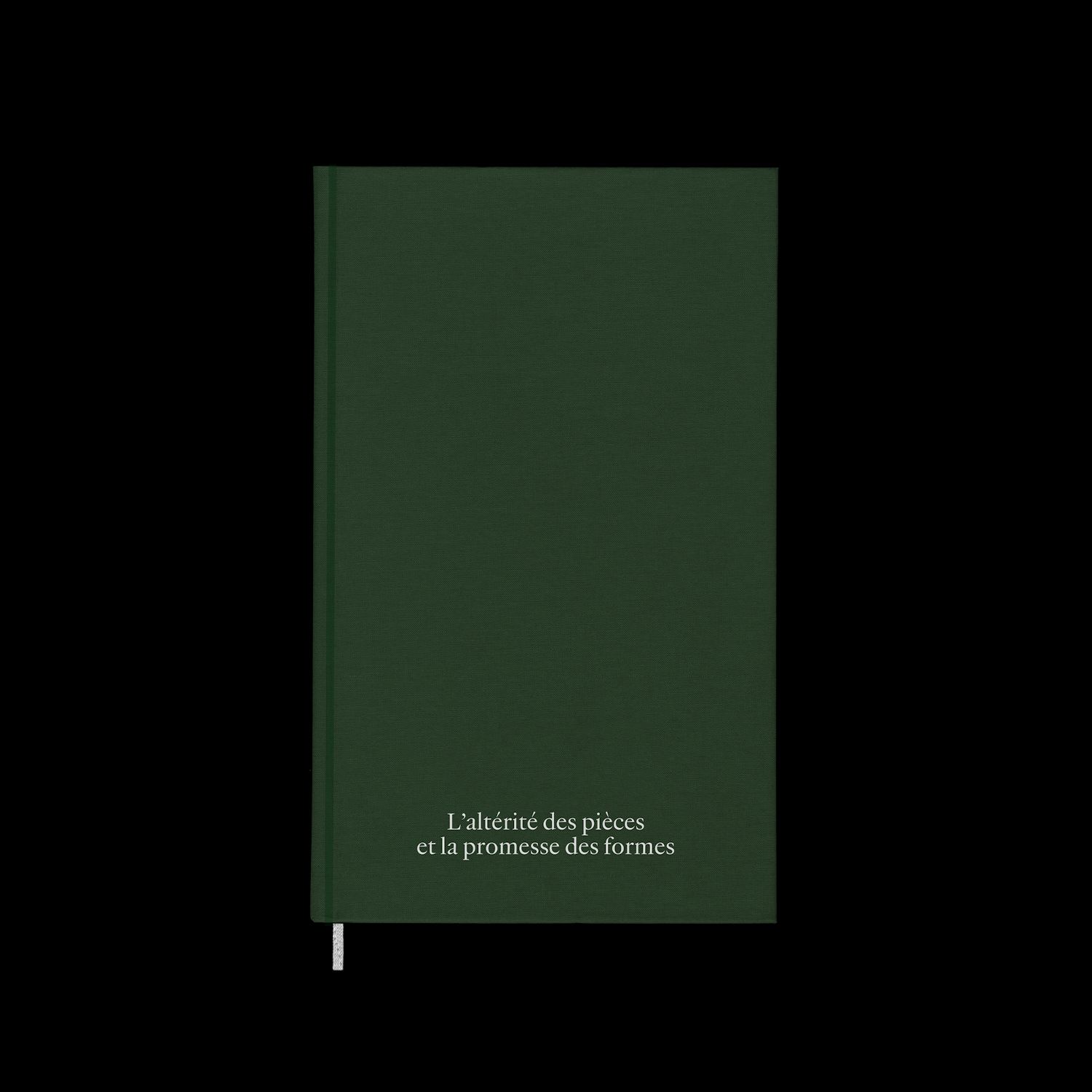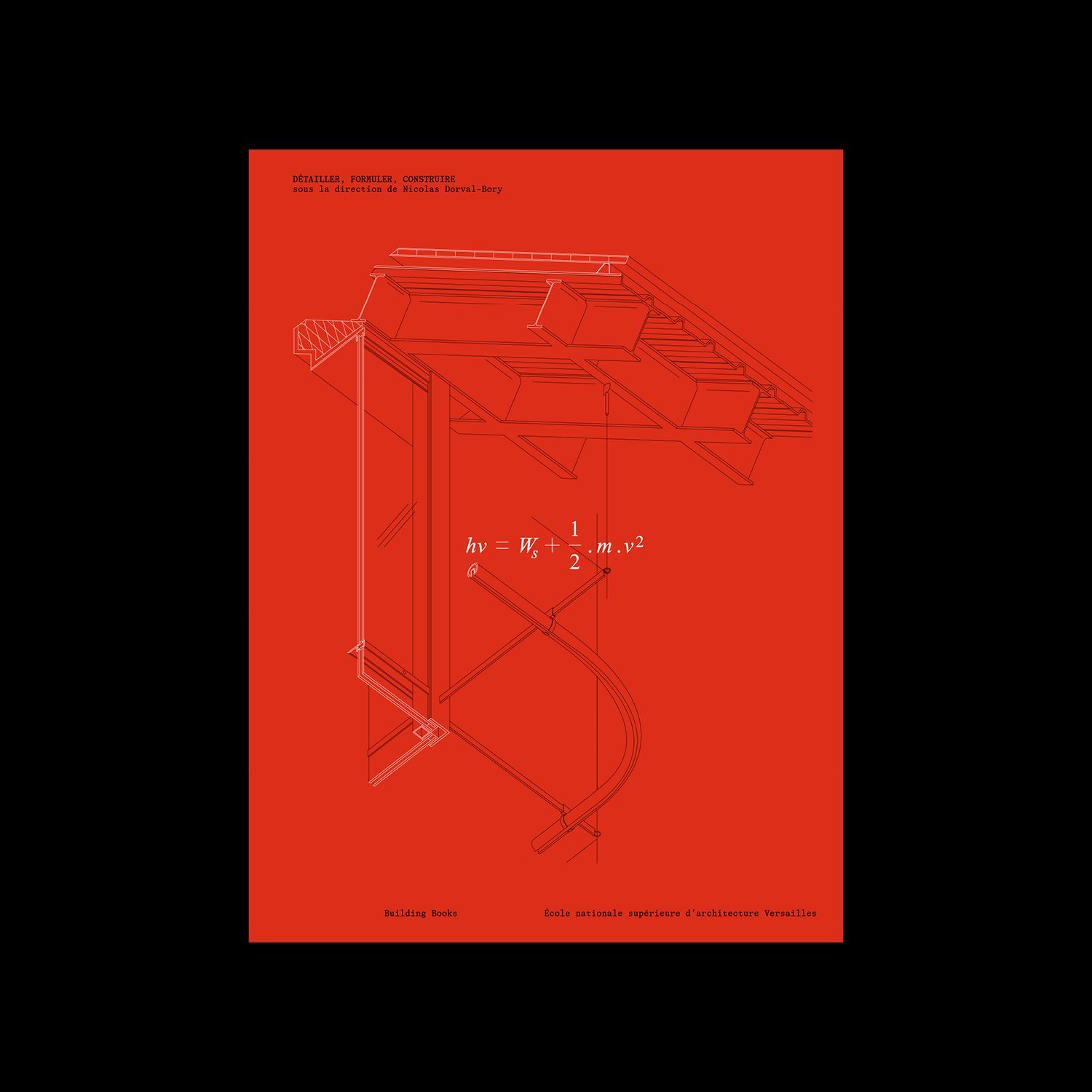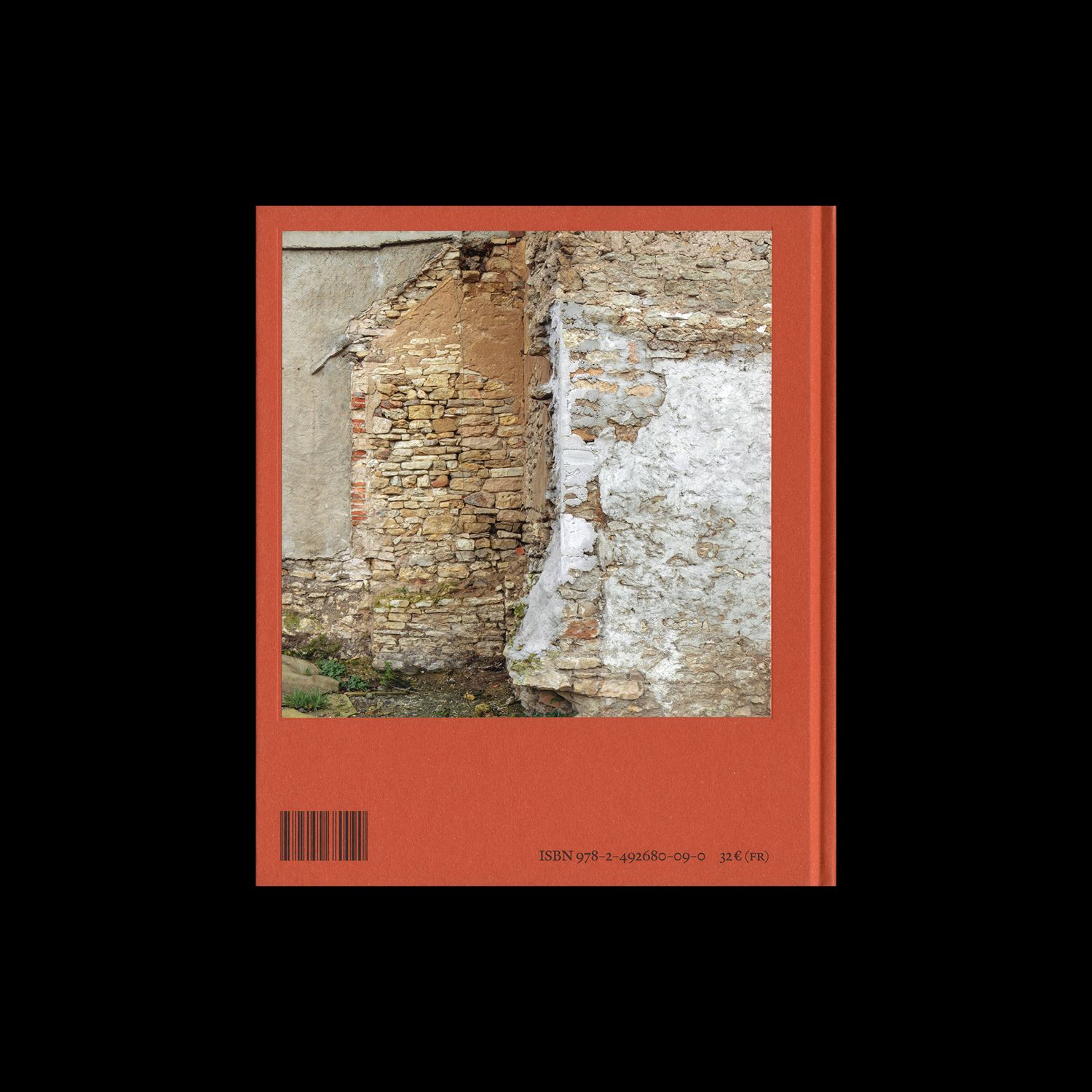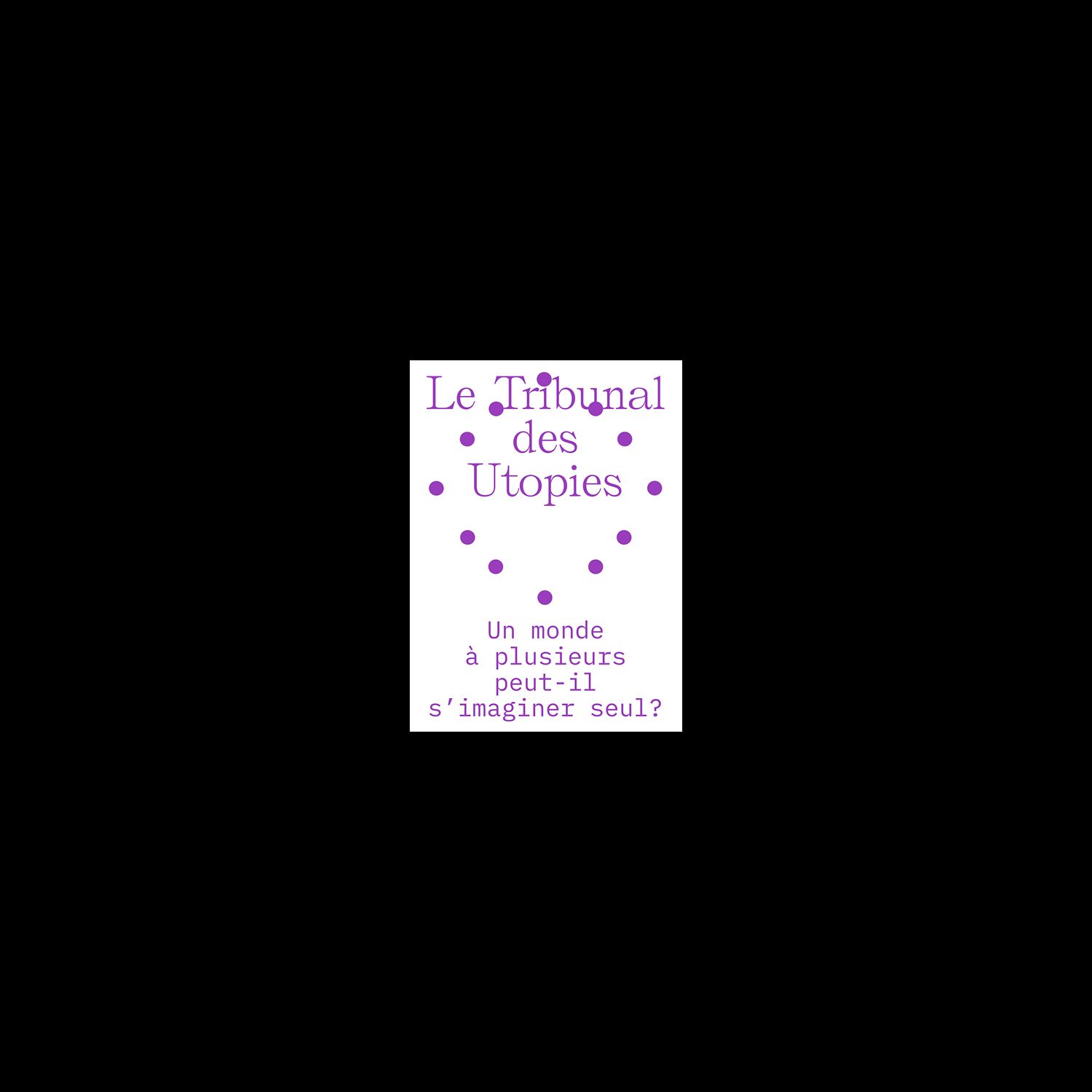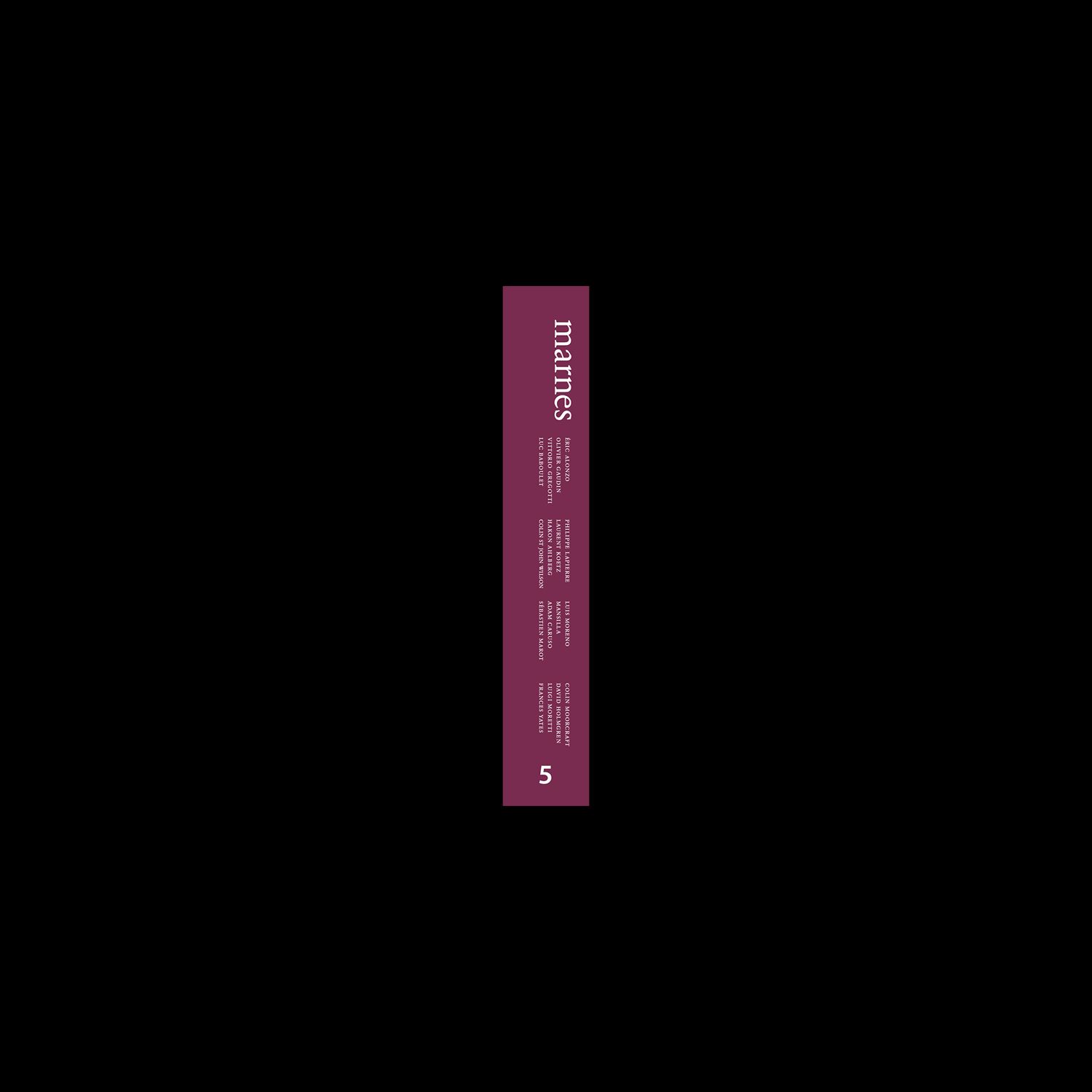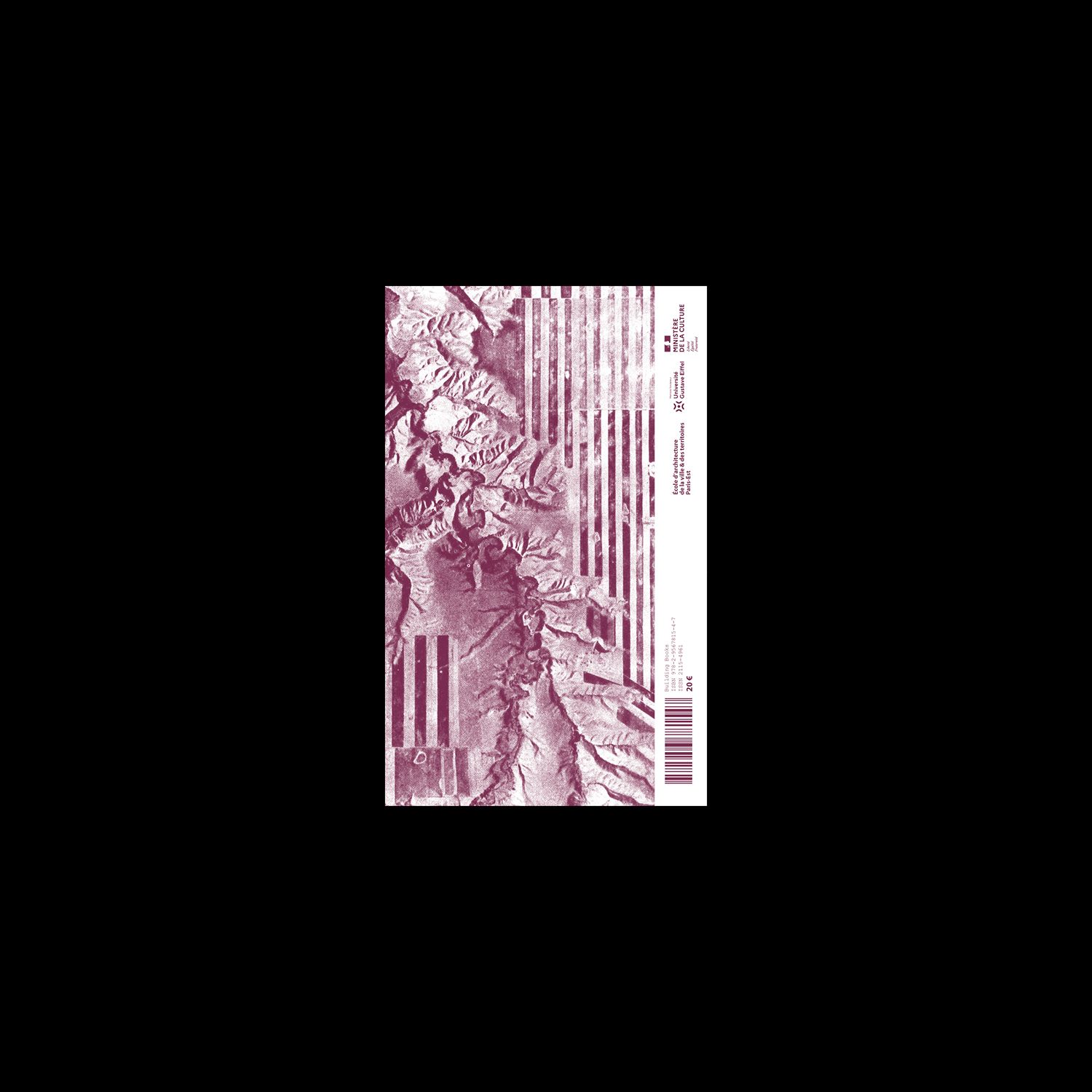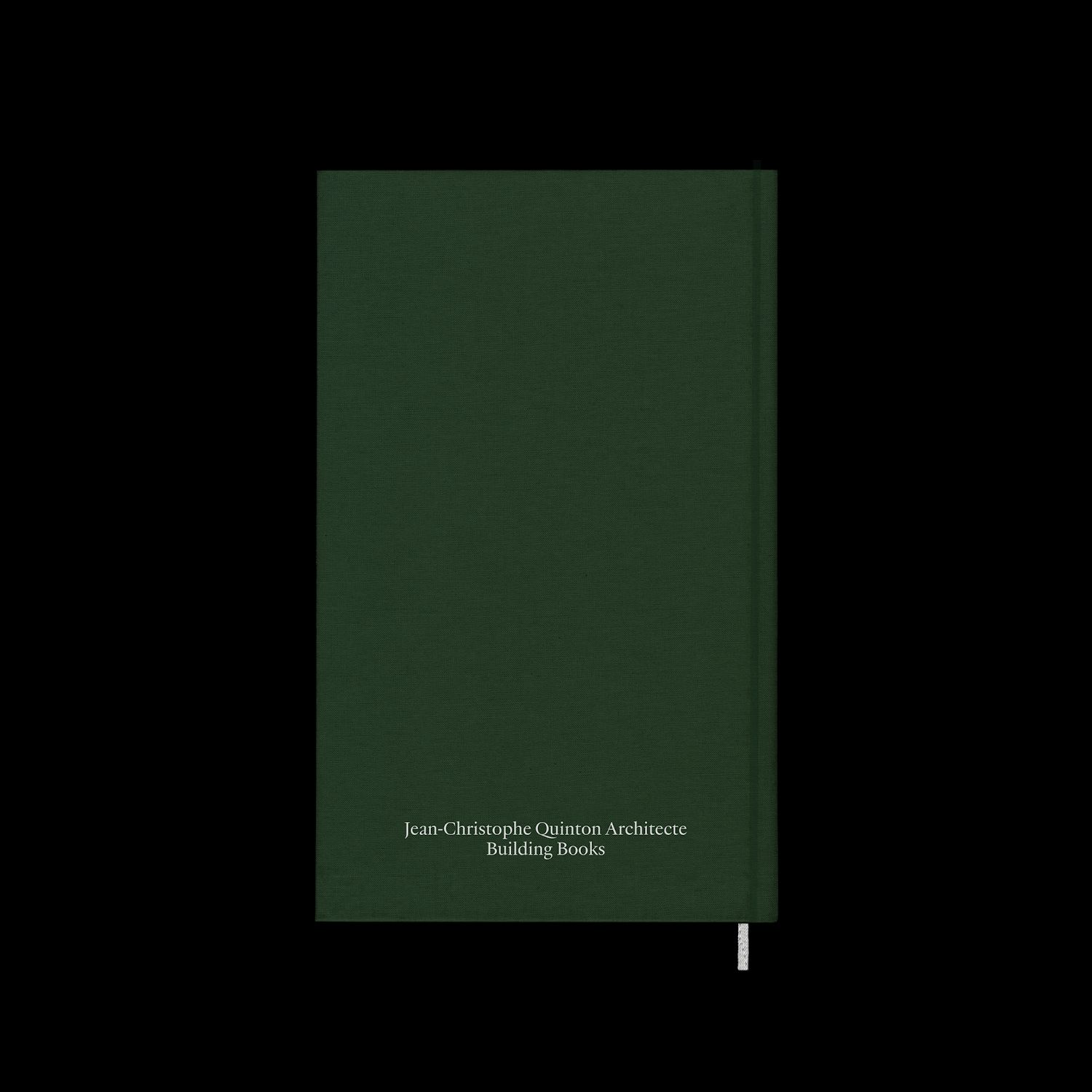

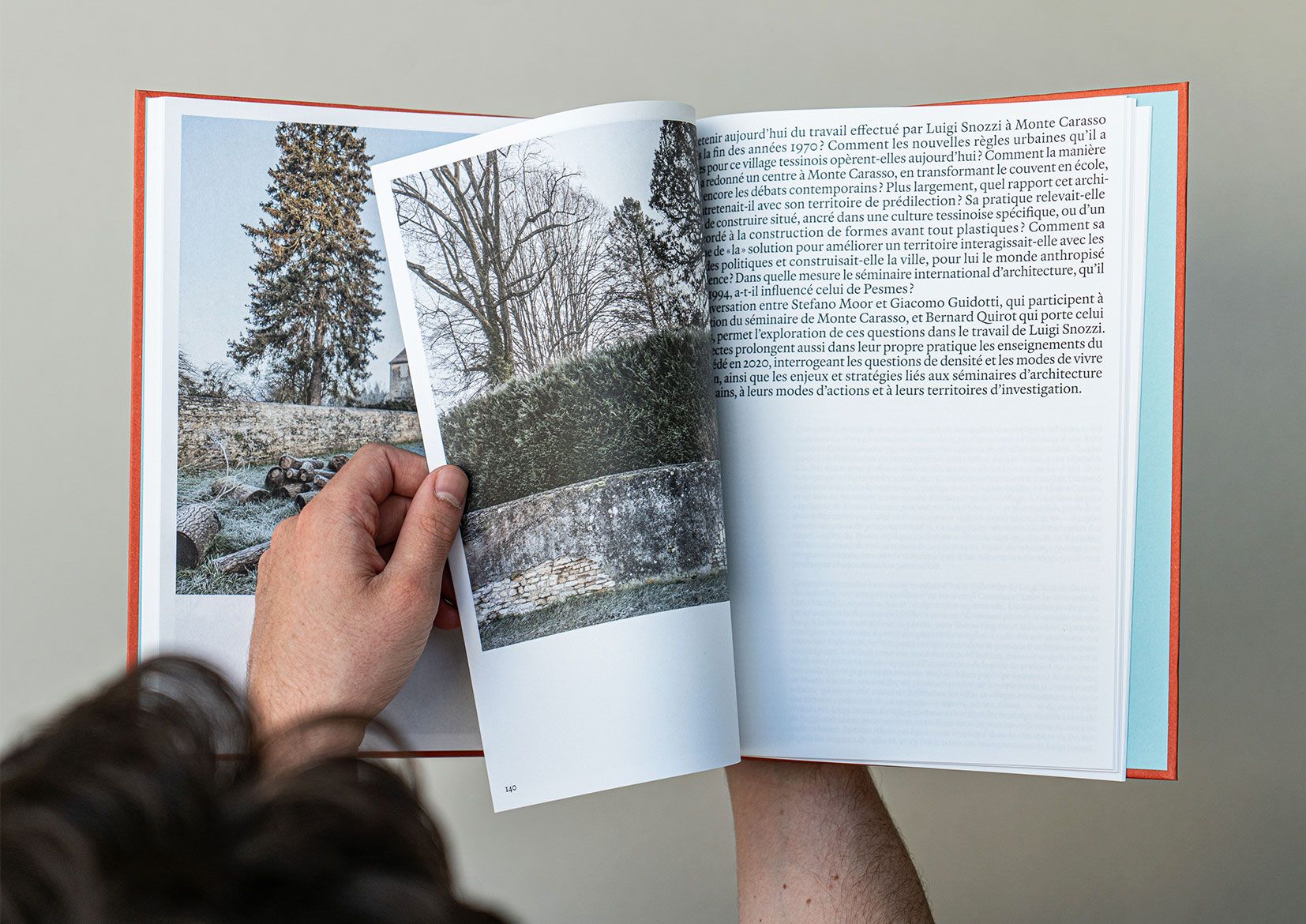










Pesmes,
Art de construire et engagement territorial
Luc Boegly, Émeline Curien (dir.)
ISBN 978-2-492680-09-0
32 €
FR — L’ouvrage prend appui sur le séminaire d’architecture organisé par Avenir Radieux et dirigé par Bernard Quirot à Pesmes depuis 2015. Étudiants, architectes, critiques et historiens invités y expérimentent le projet comme outil de connaissance et de transformation du territoire, où échanges, débats et visée critique et prospective se nourrissent. Se dessine alors une préoccupation commune: relier l’architecture, considérée comme acte de construire, avec un engagement territorial appréhendé dans ses dimensions tant matérielles que spatiales, tant économiques que culturelles. Au travers d’entretiens, menés par Émeline Curien avec plusieurs de ces intervenants, l’ouvrage explore les formes multiples de cet embrayage spécifique et en révèle les aspects pratiques, théoriques, politiques et prospectifs. Par le dialogue photographique réalisé par Luc Boegly avec le village de Pesmes, le livre ouvre une méditation sur l’historicité de ces problématiques et sur la poésie des périphéries proches et lointaines des métropoles européennes et sur leur état préoccupant.
Avec les photographies de Luc Boegly et 10 entretiens menés par Émeline Curien, avec Jean-Patrick Fortin, Françoise Fromonot, Giacomo Guidotti, Pierre Hebbelinck, José Ignacio Linazasoro, Jacques Lucan, Stefano Moor, Gilles Perraudin, Bernard Quirot, Vincent Rapin, Émilien Robin, Maria Saiz, Simon Teyssou.
EN — The book is based on the architecture seminar organised by Avenir Radieux and directed by Bernard Quirot in Pesmes since 2015. Students, architects, critics and invited historians experiment with the project as a tool for knowledge and transformation of the territory, where exchanges, debates and critical and prospective views are nourished. A common concern emerges: to link architecture, considered as an act of building, with a territorial commitment understood in its material as well as spatial, economic and cultural dimensions. Through interviews conducted by Émeline Curien with several of these contributors, the book explores the multiple forms of this specific clutch and reveals its practical, theoretical, political and prospective aspects. Through Luc Boegly’s photographic dialogue with the village of Pesmes, the book opens a meditation on the historicity of these issues and on the poetry of the near and distant peripheries of European metropolises and their worrying state.
With photographs from Luc Boegly and 10 interviews lead by Émeline Curien, with Jean-Patrick Fortin, Françoise Fromonot, Giacomo Guidotti, Pierre Hebbelinck, José Ignacio Linazasoro, Jacques Lucan, Stefano Moor, Gilles Perraudin, Bernard Quirot, Vincent Rapin, Émilien Robin, Maria Saiz, Simon Teyssou.
Infos
FR — Couverture dure (2 versions)
Format 23×27 cm, 168 pages
Langue FR
Iconographie 70 images couleur, 68 images monochromes
Conception graphique Building Paris
Typographie Immortel Infra (Clément Le Tulle-Neyret, 205 TF)
Imprimé par Musumeci à Quart (IT)
Coédité avec Avenir Radieux
EN — Hardcover (2 versions)
Format 23×27 cm, 168 pages
Language FR
Illustrations 70 colour pictures, 68 monochrome images
Graphic design Building Paris
Typeface Immortel Infra (Clément Le Tulle-Neyret, 205 TF)
Printed by Musumeci in Quart (IT)
Coedited with Avenir Radieux
Bernard Quirot
FR — Né à Dole (Jura) en 1959, Bernard Quirot est diplômé de l’École d’architecture de Paris-Belleville en 1986. Il est pensionnaire de la Villa Médicis à Rome en 1988-1989 où il mène une recherche sur les invariants dans l’architecture occidentale. Il a été nominé au prix d’architecture BSI Swiss Architectural Award en 2010, ainsi qu’au Grand prix national d’architecture en 2018. Il a reçu le prix de l’Équerre d’argent qui récompense le meilleur bâtiment de l’année pour le projet de la maison de santé de Vézelay (2015). Son projet pour le lycée Ledoux de Besançon (1992) a reçu le label Patrimoine du XXe siècle en 2016. En 2014, il fonde l’association Avenir Radieux qui œuvre à la restructuration du centre historique du village de Pesmes et qui organise depuis 2015 un séminaire annuel d’architecture. Il est l’auteur de l’essai Simplifions (Cosa Mentale, 2019). Il est installé dans le village de Pesmes (Haute-Saone) et associé à Alexandre Lenoble, Chloé Blache et Julie Vielle.
EN — Born in Dole (Jura) in 1959, Bernard Quirot graduated from the École nationale supérieure d’architecture Paris-Belleville in 1986. He was a resident at the Villa Medici in Rome in 1988-1989, where he conducted research on invariants in Western architecture. He was nominated for the BSI Swiss Architectural Award in 2010, as well as for the Grand Prix National d’Architecture in 2018. He received the Équerre d’argent award for the best building of the year for the Vézelay health centre project (2015). His project for the Lycée Ledoux in Besançon (1992) received the label Patrimoine du XXe siècle in 2016. In 2014, he founded the association Avenir Radieux, which works on the restructuring of the historic centre of the village of Pesmes and has organised an annual architecture seminar since 2015. He is the author of the essay Simplifions (Cosa Mentale, 2019). He is based in the village of Pesmes (Haute-Saone) and is associated with Alexandre Lenoble, Chloé Blache, and Julie Vielle.
Émeline Curien
FR — Émeline Curien a suivi une formation d’architecte et a réalisé une thèse en histoire de l’art portant sur l’architecture suisse alémanique des années 1980 à nos jours. Elle enseigne à l’École nationale supérieure d’architecture de Nancy et est chercheuse au Laboratoire d’histoire de l’architecture contemporaine (LHAC), laboratoire dans lequel elle poursuit ses recherches sur les pratiques contemporaines de l’architecture en Europe en lien avec les questions écologiques élargies. Autrice d’ouvrages et d’articles sur des architectes et réalisations françaises, suisses, belges et autrichiennes, elle fait également partie à Nancy d’une équipe pédagogique et scientifique intitulée «Mutations». Celle-ci regroupe des architectes praticiens et des chercheurs en architecture, anthropologie, philosophie et sociologie, qui cherchent à comprendre et penser les enjeux des transformations socio-économiques, culturelles et surtout environnementales en cours et leurs impacts sur l’habiter dans toutes ses dimensions. Elle est l’autrice de plusieurs ouvrages dont Gion A. Caminada, S’approcher au plus près des choses (Actes Sud, 2018); Pourquoi bâtir encore? Atelier d’architecture Éric Furnémont (Les Éditions de la Province de Liège, 2019); Pensées constructives, Architecture Suisse Alémanique 1980-2000 (Fourre-Tout, 2019).
EN — Émeline Curien trained as an architect and completed a thesis in art history on Swiss-German architecture from the 1980s to the present day. She teaches at the École nationale supérieure d’architecture in Nancy and is a researcher at the Laboratoire d’histoire de l’architecture contemporaine (LHAC), a laboratory in which she pursues her research on contemporary architectural practices in Europe in relation to broader ecological issues. She is the author of books and articles on French, Swiss, Belgian and Austrian architects and projects, and is also a member of a pedagogical and scientific team in Nancy called “Mutations”. This team brings together practising architects and researchers in architecture, anthropology, philosophy and sociology, who seek to understand and think about the issues at stake in the socio-economic, cultural and, above all, environmental transformations underway and their impact on living in all its dimensions. She is the author of several books including Gion A. Caminada, S’approcher au plus près des choses (Actes Sud, 2018); Pourquoi bâtir encore? Atelier d’architecture Éric Furnémont (Les Éditions de la Province de Liège, 2019); Pensées constructives, Architecture Suisse Alémanique 1980-2000 (Fourre-Tout, 2019).
Luc Boegly
FR — Né en 1962 à Strasbourg, Luc Boegly vit et travaille à Paris. Après des études à l’École nationale supérieure Louis Lumière et un voyage initiatique au Japon, il décide de se consacrer à la photographie d’architecture contemporaine et patrimoniale en rejoignant en 1988, comme membre associé, l’agence Archipress, première agence spécialisée en photographie sur l’architecture contemporaine. Il exerce son activité de façon indépendante depuis 2002. Il publie mensuellement dans les revues d’architecture françaises et étrangères. Sa pratique s’articule autour de trois axes : la photographie d’architecture, à travers des missions commanditées par des architectes ou des éditeurs spécialisés en architecture; la photographie d’expositions, à travers des reportages pour des scénographes ou des institutions culturelles comme le Musée des arts décoratifs, la Fondation Cartier, la Fondation Carmignac; la photographie scientifique, à travers la constitution de corpus de recherche en architecture et urbanisme en collaboration avec des chercheurs (monographies d’architectes et de villes).
EN — Born in 1962 in Strasbourg, Luc Boegly lives and works in Paris. After studying at the École nationale supérieure Louis Lumière and an initiatory trip to Japan, he decided to devote himself to contemporary and heritage architecture photography by joining Archipress, the first agency specialising in contemporary architecture photography, as an associate member in 1988. He has been working independently since 2002. He publishes monthly in French and foreign architecture magazines. His practice is based on three main areas: architectural photography, through assignments commissioned by architects or publishers specialising in architecture; exhibition photography, through reports for scenographers or cultural institutions such as the Musée des Arts Décoratifs, the Fondation Cartier and the Fondation Carmignac; and scientific photography, through the creation of a body of research on architecture and urban planning in collaboration with researchers (monographs on architects and cities).
Building Paris
FR — Building Paris est un studio de design graphique et de direction artistique fondé par Benoît Santiard et Guillaume Grall en 2012. Convaincus que le design doit avant tout se mettre au service d’un contenu, leur production est marquée par un goût prononcé pour l’évidence et veille à s’adapter à chaque contexte en portant un soin particulier au détail typographique. Dans la continuité de leur pratique, ils enseignent au sein du champ Représentation à l’École d’architecture de la ville & des territoires Paris-Est depuis 2008. Le studio travaille sur des projets d’édition, d’identité visuelle et d’exposition, aux sujets et aux échelles variés, où la contrainte (temporelle, économique, matérielle) est un élément moteur du processus créatif. Ils aiment citer Renaud Huberlant, graphiste et enseignant belge: «Générer du contenu ne peut se faire que si on comprend ce sur quoi on travaille. C’est une question de procédure, pas d’esthétique. Cela signifie: si les choses sont bien pensées, les formes seront bonnes.» Leur intérêt pour l’architecture les amène à collaborer régulièrement avec des architectes, des auteurs et des photographes.
EN — Building Paris is a graphic design and art direction studio founded by Benoît Santiard and Guillaume Grall in 2012. Convinced that design must above all serve content, their production is marked by a pronounced taste for the evidence and ensures that it is adapted to each context by focusing on typographic detail. In the continuity of their practice, they have been teaching in the Representation field at the École d'architecture de la ville & des territoires Paris-Est since 2008. The studio works on publishing, visual identity and exhibition projects, with various subjects and scales, where the constraint (temporal, economic, material) is a driving force in the creative process. They like to quote Renaud Huberlant, a Belgian graphic designer and teacher: “Generating content can only be done if you understand what you are working on. It's a question of procedure, not aesthetics. That means: if things are well thought out, the forms will be good.” Their interest in architecture leads them to collaborate regularly with architects, authors and photographers.
